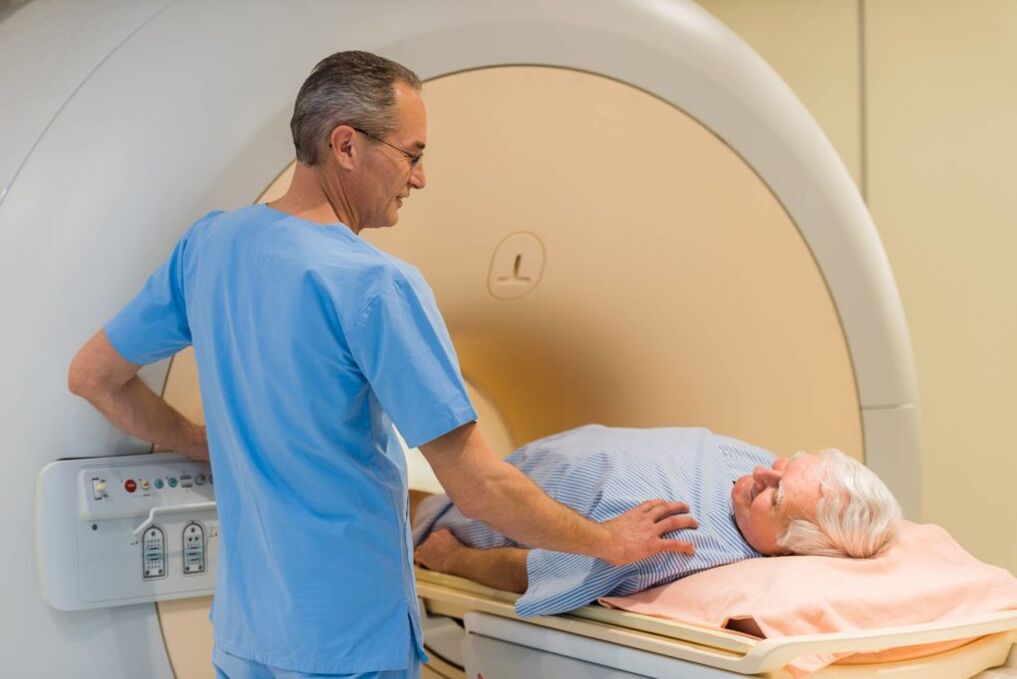Stone prostatitis is a complication of the chronic inflammatory process of the prostate. For this disease, stones will form in the excretory ducts of the prostate and acinar. Due to the development of the pathological process, the patient's urge to urinate becomes more frequent, pain in the perineum and lower abdomen, and erectile dysfunction. You should not go through the course of this disease, because it will eventually lead to many health problems.
What is calculous prostatitis

This disease is a chronic prostatitis. The disease is characterized by the formation of prostatic stones or stones, which is one of the most common consequences of the long-term inflammatory process observed in the prostate.
Approximately 9% of men of different ages find prostate stones most often during routine examinations.
There are three age peaks in the incidence of this form of prostatitis:
- 30-39 years old. Usually, the disease is not detected in patients under 30 years of age. However, this disease is gradually getting younger. In this age group, the development of calculous prostatitis is related to long-term chronic prostatitis caused by gonorrhea, chlamydia, ureaplasmosis or mycoplasmosis.
- 40-59 years old. Among men in this age group, this disease most often causes prostate adenomas.
- Over 60 years old. In this case, stone prostatitis most often occurs in the context of disappearance of sexual function.
Causes and risk factors
The formation of prostate stones may be due to two reasons:
- True or primary, characterized by the direct development of the disease in the ducts of the glands or acinars.
- Minor or error, where stones migrate from the upper urinary tract. In most cases, they are formed in the bladder, kidney or urethra. The cause of calculus prostatitis may be urolithiasis.
According to the nature of the disease onset, the reasons for its development are divided into two groups:
- external. In this case, we are talking about factors that have nothing to do with the work of the body but act on it from the outside. This includes drug, smoking or alcohol abuse.
- Endogenous. Stones can occur in the context of any body function disorder. We are talking about organ damage or complications after surgery. Bacteria's damage to the prostate is also related to these factors.

Alcohol abuse can trigger the development of calculous prostatitis in men.
Stone prostatitis usually occurs under the background of stagnation and inflammatory changes in the prostate. This process is caused by insufficient emptying of the prostate, so the following factors are the main causes of the disease:
- Lack of regular sex life;
- Sedentary lifestyle is dominant;
- Masturbation instead of sex;
- Bad habits, such as alcohol or smoking;
- The inflammatory process of the prostate caused by microorganisms invading the organs.
Experts distinguished two main pathological mechanisms that cause stones to form in organs and their ducts:
- The secretory function is disrupted, thus resulting in a significant stagnation of prostate secretion.
- Pour urine into the prostate cavity. This may occur in the context of abnormal genitourinary system function, fistula formation and many other negative factors.
symptom
The symptoms of calculous prostatitis are similar in many ways to the development of chronic inflammation of the prostate, but they are more pronounced. Most patients diagnosed with this form of prostatitis complain of difficulty and pain in urination.
In this case, the difference from chronic prostatitis is that the patient has pain throughout the day, not just at night. The cause of this clinical manifestation is usually that the process of urine and prostate secretion is disturbed. This is due to the stone completely or partially blocking the catheter.
Many other symptoms of the disease should also be emphasized:
- The presence of pain in the pelvis and perineum. In addition, they can not only show up when urinating. The patient has an unpleasant sensation in the tailbone and lower abdomen, which has nothing to do with the specific time of day.
- Pathological impurities appear in semen. Bloody secretions are usually found in it, and only in extreme cases will pus appear.
- Painful urination against the background of frequent false desires. In most patients, very little urine is excreted. However, it may not exist at all.
- Erectile dysfunction. As the prostate duct is blocked, the normal flow of semen from the organ is disturbed. All these make it impossible to complete sexual intercourse.
In the most severe cases of disease progression, the patient may not have an erection at all and significantly reduce libido.
diagnosis

Magnetic resonance imaging provides good results for accurately identifying diseases.
Before treating calculous prostatitis, the patient must be carefully examined. The urologist is engaged in the diagnosis of this disease. He is obliged to make a preliminary diagnosis based on the patient's main complaint and subsequent physical and instrumental examinations. It includes the following procedures:
- Digital rectal examination of the prostate. It is done by palpation. In the presence of calculous prostatitis, the patient has a crepitus and uneven stone surface.
- Transrectal ultrasound of the prostate. Through this process, the stone with the appearance of a highly echogenic structure with a clearly visible acoustic path can be identified. The number, size, location and structure of such strata are studied.
- Investigate urography. This procedure allows you to determine if prostatitis is present.
- MRI and CT of the prostate. These techniques are very effective and are used to confirm the results of previous studies.
When using other procedures: urethral angiography, pyelography and cystography.
In addition to instrumental technology, the diagnosis of calculous prostatitis also includes laboratory tests, which include the following procedures:
- Study the secretion of the prostate.
- Bacterial culture analysis of urine and urethral material.
- PCR research, during which scraping is performed to investigate whether there is a genital infection.
- blood test. In most cases, biochemical analysis will be performed.
- Urinalysis.
- Semen biochemical analysis.
- Bacteriological seeding of semen.
If we are talking about differential diagnosis, then its task is to distinguish calculous prostatitis from tuberculosis, prostate adenoma, prostate tumor, and various types of prostatitis.
treat
How to cure stone prostatitis? The treatment of calculous prostatitis is prescribed by a doctor based on a thorough diagnosis. Depending on how advanced the disease is, there may be multiple treatment options. Let us consider each of them in more detail.
medical treatement
The course of treatment is strictly and individually prescribed by the doctor.
The treatment of chronic calculous prostatitis with pills can last one to three months. This type of treatment is mainly aimed at achieving stable remission and preventing disease complications.
Regardless of the cause of the disease, the patient will be prescribed antibacterial drugs. Prescribe antibiotics based on the analysis of urethral secretions and urine culture.
The most commonly used drugs for treating calculous prostatitis are:
- Fluoroquinolones. This is the most effective group of antibiotics used to treat calculous prostatitis. However, these funds can only be used after tuberculosis has been completely ruled out.
- Tetracyclines. They are used less frequently because they often cause side effects.
- penicillin. A classic antibiotic that has a wide range of effects on pathogenic microbial communities.
- cephalosporin.
physiotherapy
In order to enhance the effect of drug treatment and improve the function of the prostate, the following physical therapy techniques are used:
- Magnetic therapy. It is used to eliminate edema and normalize the blood circulation process.
- Laser Treatment. Eliminates pain syndromes and helps reduce the inflammatory process.
- Prostate massage. Let you restore the patency of the catheter and improve the blood circulation of the prostate.
In some cases, treatment of calculous prostatitis requires a thorough approach. In this case, various surgical techniques are used, the most popular of which is prostatectomy.
Possible complications

Exercise is the best way to prevent stone prostatitis.
If left untreated, the patient may develop chronic calculous prostatitis. This can be fraught with the following dangerous complications:
- The development of abscesses;
- Prostatic fibrosis;
- Effectiveness issues
- Urinary incontinence;
- Various forms of seminal vesiculitis.
Therefore, it is very important to detect calculous prostatitis and start treatment in time. In order to prevent this disease, people should quit smoking and drinking, exercise more, treat infections in time, and prevent hypothermia.

























